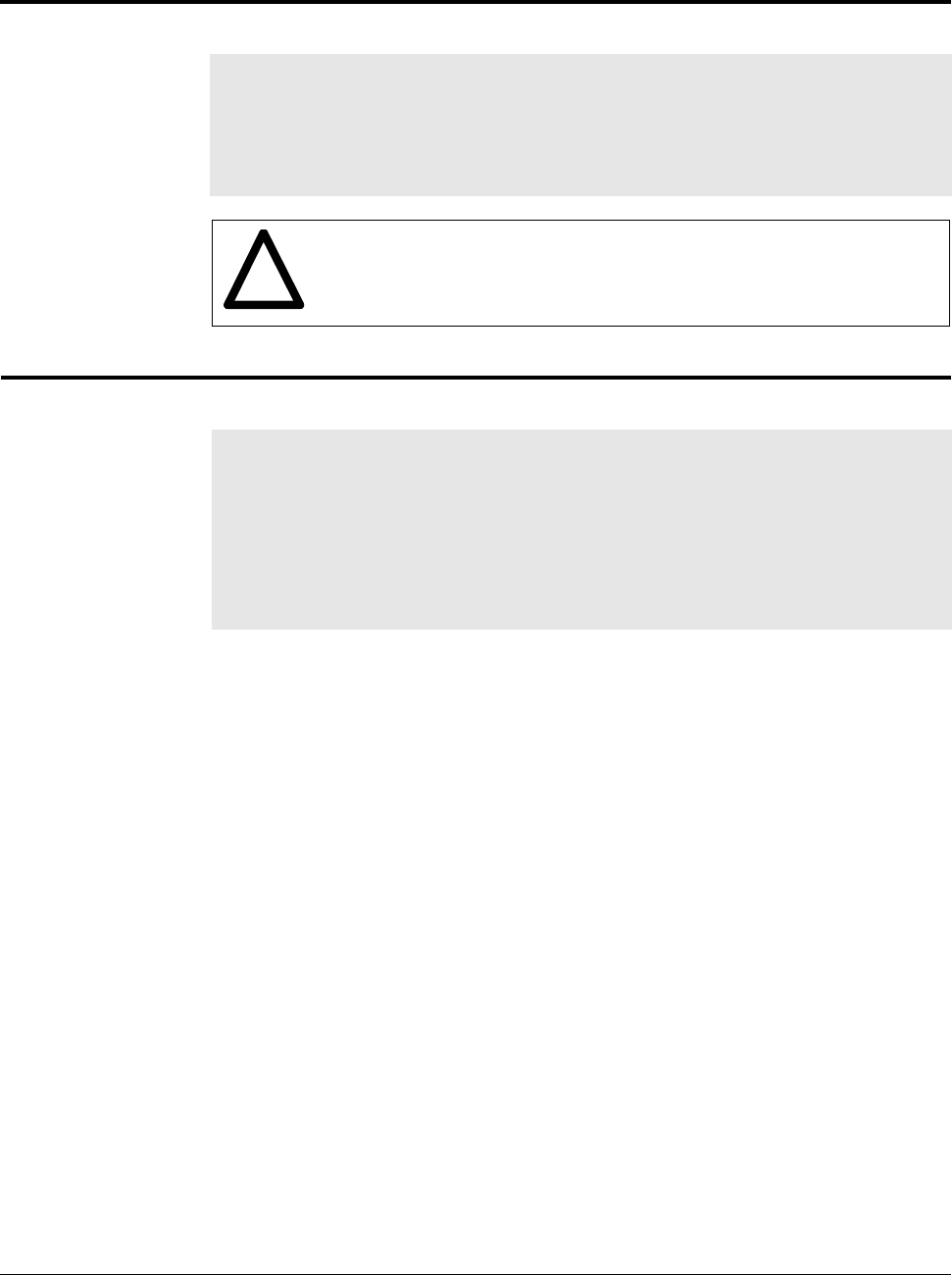Software Start-Up and Ref. Owner manual
Table Of Contents
- GV3000/SE AC General Purpose (V/Hz) and Vector Duty Drive, 1 - 20 HP, 230V AC Software Start-Up and Reference Manual D2-3387-5
- Important User Information
- Document Update
- Summary of Changes
- Table of Contents
- List of Figures
- List of Tables
- Preface
- Chapter 1 - Starting Up the Drive for Volts/Hertz Regulation
- Chapter 2 - Starting Up the Drive for Vector Regulation
- Chapter 3 - Using the Keypad/Display To Program, Monitor, and Control the Drive
- Chapter 4 - Programming Reference
- Chapter 5 - Troubleshooting the Drive Using Error Codes
- Appendix A - Alphabetical Listing of Parameters
- Appendix B - Record of User Parameter Settings
- Appendix C - Power Module-Dependent Parameter Default Values (230 V Series)
- Appendix D - Default Parameter Settings
- Appendix E - Configuring the Digital Inputs When the RMI Board Is Installed in the Drive
- Appendix F - Using the Terminal Strip Analog Input
- Appendix G - Drive Regulation Overview
- Back Cover / Publication D2-3387-5 July 2013

4-58
GV3000/SE 230 VAC Drive, Software Reference Version 6.04
H.002 Motor Nameplate Amps
This parameter is the
motor amp rating as
it appears on the
motor nameplate.
Parameter Range: Power Module-dependent
Default Setting: Power Module-dependent, see Appendix C
Parameter Type: Configurable
Refer also to parameters: N/A
ATTENTION: This parameter must not exceed the rated amps found
on the motor nameplate. Overcurrent or excess heating of the motor
could result if this is not done. Failure to observe this precaution could
result in damage to, or destruction of, the equipment.
!
H.003 Torque Boost Voltage
This parameter sets
the percentage of
output voltage boost
at zero frequency. It
is set as a
percentage of Motor
Nameplate Volts
(H.000).
Parameter Range: 0.0% to 20.0% of nominal inverter voltage
Default Setting: 0.5%
Parameter Type: Configurable
Refer also to parameters: H.000 Motor Nameplate Volts
Important: If you set H.003 = 0, you must perform the identification test (using
H.020) prior to running.
Torque boost is required to offset the voltage drop of the AC motor at low speeds.
For high friction loads and high inertia loads, high starting torque may be needed.
Increasing Torque Boost Voltage will increase motor starting torque. See figure
4.11.
If the torque boost voltage setting (H.003) is too high, the motor may draw
excessive starting current, resulting in an OL or PUo fault, or the drive may go into
current limit and not accelerate. When H.003 = 0, the drive automatically provides
torque boost voltage that is a function of motor load. If the motor does not
accelerate or a fault occurs, set parameter H.003 equal to 0.










